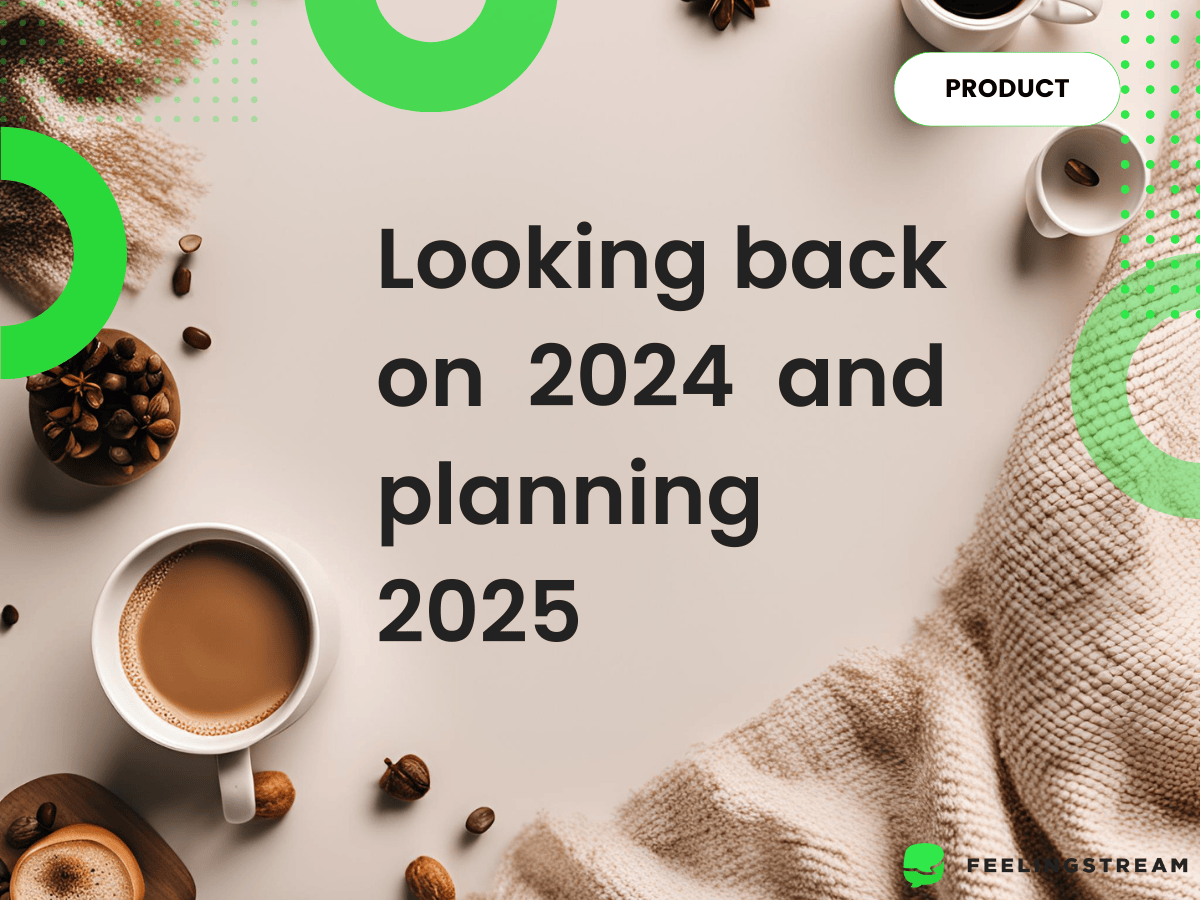As it always happens at the end of the year, we like to look back on what we have done in Feelingstream in 2024 and explore into the future with some plans and hints about 2025. Our focus is on automating insights, bringing them closer to our users and offering need-based tools with the help of generative AI and conversation analytics.
Changes in 2024
In 2024, we released three new versions of the Leadstream application.
Version 1.11 was a security-themed version, putting emphasis on advanced solutions of granular security measures. In addition to our other security features and limits, it is possible to limit access to data based on time and to eliminate transcribed customer conversations from analytics when needed.
Next, we came out with version 1.12 which included the first introduction of LLM-based solutions with a beta of the Automatic Summary. We also had advancements within audio anonymisation and UI/UX solutions.
We delved deeper into the Automatic Summary solution and processing automation within version 1.13 – the official release of the Automatic Summary! With this new feature, users can already take full advantage of both the automation process and analytics solution. Check out our article to learn about 13 reasons why you should use use the Automatic Summary. Additionally, version 1.13 brought the user additional options with multi-label classification. As usual, there were other updates such as changes to UI and some new choices for chart creation.
Throughout the year, we made strides in automating maintenance and retention. We have been removing custom legacy solutions, moving towards standardisation where possible and needed. After opening the door to LLMs and generative AI solutions in 2024 with the Automatic Summary, we have made a lot of progress in the background. We are finding different ways to use LLMs to support various use cases and have explored how they can help our users with quality, efficiency, and sales.
What’s to come in 2025?
The future of the Leadstream application revolves around making insights more automated and accessible to the users via different standard solutions.
Our next version will help our customers reach new heights in quality!
We will release the next version – Leadstream 1.14 – at the beginning of 2025. In version 1.14, we are automating quality assessment with Automatic Quality Score and Call Metric Score.
The automatic generative AI based Automatic Quality Score helps systematise quality assessment activities by evaluating the textual content of all conversations. The purpose of Automatic Quality Score is to evaluate customer service interactions in a simple and straightforward manner, focusing on key aspects of the conversation. This helps discover training needs and inefficiencies, giving a full overview instead of the limited knowledge based on small samples that quality coaches and team leads rely on today.
The Call Metric Score solution is used to bring out the outliers of the most important statistical metrics including, but not limited to crosstalk and silence share. This will point out the calls that need extra care. They can be used to identify patterns in Team and Agent performance to highlight training opportunities.
Sales monitoring, unwanted calls analysis, and much more to come with generative AI
We are also making progress in a more systematic approach to sales monitoring and assessment. This includes finding training possibilities for Agents, figuring out which sales arguments have the best acceptance rates, and following up on customer conversations based on the counter-arguments raised by customers during sales calls.
Another interesting area we’ve progressed in and plan to continue to develop is unwanted call analytics. We can assess whether the customer has wanted or had to call to support, figuring out the reasons behind failure-driven calls and looking into possible ways of avoiding these calls.
As we have systematic and efficient processes in place for finding various insights for the users, we are offering standard views, evaluations, user-need based tools, and look forward to bringing the knowledge closer to the users while needing less input from them.
We aim to bring our users the information they need to make efficient, data-based decisions and empower them to strive towards their goals.
If you would like to hear more about what we’ve already done or plan to do in 2025, reach out to us and request demo call from here.




